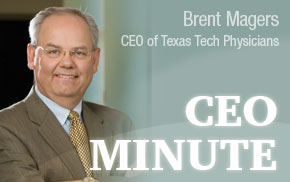 Today’s column is about CG-CAHPS. What is it? These letters stand for Clinical and
Group — Consumer Assessment of Healthcare Providers and Systems. This is a program
developed and maintained by a federally-sponsored research consortium funded by the
U. S. Agency for Healthcare Research and Quality. Its purpose is to measure the strengths
and weaknesses of patients’ experience in receiving care from various providers’ practices
and in different settings across the nation, as well as to gain greater understanding
of the respondent’s health care status and certain aspects of communication/coordination
about his or her care. It is being done through the use of standardized questions.
The idea is that such data will allow nationwide comparative health care quality information
for consumers, providers, payers and policymakers. The Centers for Medicare and Medicaid
(CMS) are particularly interested in the information CG-CAHSP surveys will provide.
Today’s column is about CG-CAHPS. What is it? These letters stand for Clinical and
Group — Consumer Assessment of Healthcare Providers and Systems. This is a program
developed and maintained by a federally-sponsored research consortium funded by the
U. S. Agency for Healthcare Research and Quality. Its purpose is to measure the strengths
and weaknesses of patients’ experience in receiving care from various providers’ practices
and in different settings across the nation, as well as to gain greater understanding
of the respondent’s health care status and certain aspects of communication/coordination
about his or her care. It is being done through the use of standardized questions.
The idea is that such data will allow nationwide comparative health care quality information
for consumers, providers, payers and policymakers. The Centers for Medicare and Medicaid
(CMS) are particularly interested in the information CG-CAHSP surveys will provide.Another factor driving much of this emphasis on measurement is the Affordable Care Act which encourages the reporting of data. You may recall CMS launched a public site called PhysicianCompare in 2011 to help consumers make informed decisions. CMS will have data on clinical quality and patient experience on this site at some point in the future.It is important that you know that CMS makes a clear distinction between patient experience surveys and patient satisfaction surveys. We are all well acquainted with our Press-Ganey survey and what it is about. For the most part, patient satisfaction not about the patient’s health status. Patient experience surveys focus on asking patients whether or how often they experienced critical aspects of health care, including communication with their doctors, understanding their medication instructions, and the coordination of their health care needs. (I admit that some of the distinctions between the two surveys blur a bit.)
What is the upshot of this for Texas Tech Physicians? Well, the fact that all of this data is going online provides one more reason to continue on our quest to being a top-tier medical practice. We are already a highly motivated group; but this extra “push” by the federal government can be used to our advantage.
